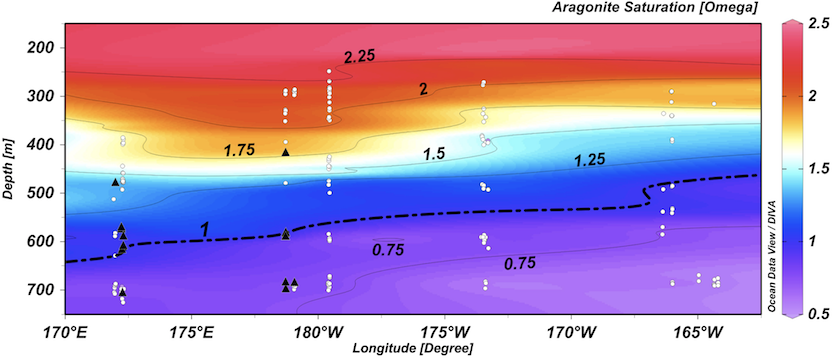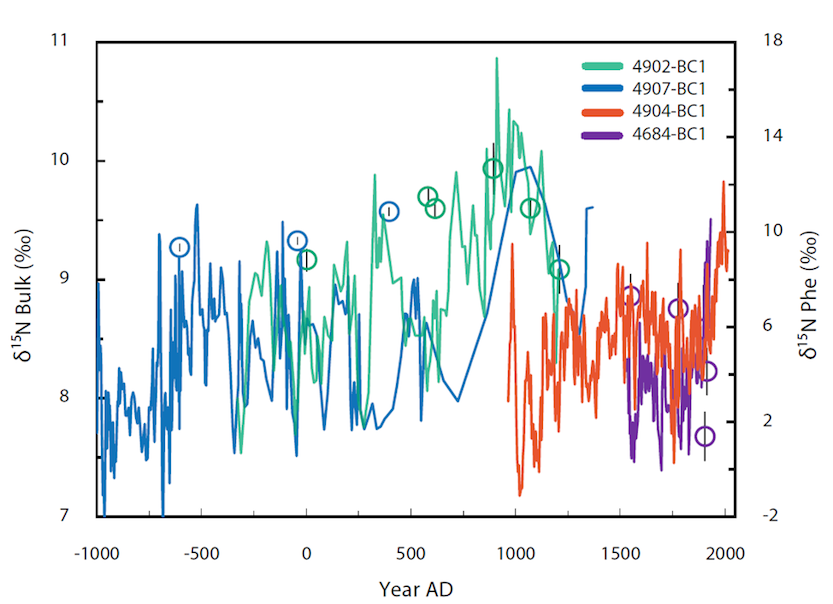Friday April 6 CSL Meeting
Apr 4, 2018 - CSL

2018 AAG New Orleans
2018 Annual AAG Meeting Preview
Presenters: Rhett Douris, Kelci Miller, John Schiff
Time: Friday, 6 April 2018, 1:45-2:45 p.m.
Location: 805 O&M
A Multi-Decadal Precipitation Evaluation for Namibia Using Satellite, Model, and Ground-Based Data
Rhett Douris
Abstract: Seasonal rainfall is an important facet of Namibia's atmospheric circulation and hydrologic cycle. Additionally, a sizable portion of the economy in Namibia revolves around when and where precipitation will occur. From ecotourism to subsistence agriculture, life in Namibia is intertwined with water. A concerted effort must be made to better understand the climatic drivers and feedbacks of precipitation over Namibia. This paper investigates the role of rainfall variability in Namibia, the synoptic-scale drivers of that variability, and the changes in precipitation variability that can be expected in the future. While the temporal and spatial coverage of climate data in southern Africa has been limited, satellite remote sensing and improved gridded rain-gauge data products have nonetheless allowed for new research into Southern Africa’s climate. We evaluate different precipitation products over Namibia against a Tropical Rainfall Measuring Mission Satellite precipitation baseline to identify which precipitation product best matches the baseline. The different datasets represent gridded in situ measurements (Climatic Research Unit data), optimum-interpolation gauge-based observations (Climate Prediction Center Unified Gauge-based Analyses), and an atmospheric reanalysis model (European Centre for Medium-Range Weather Forecasts Reanalysis-Interim). The best precipitation product is then used to create a precipitation climatology for Namibia for 1979-2016, and to further evaluate the timing, length, and severity of Namibia's wet and dry seasons. It also allows us to determine the synoptic-scale oceanic and atmospheric drivers of Namibia’s precipitation seasonality and the potential effects of climate change on precipitation.
 A 201 month precipitation climatology of Namibia using the Tropical Rainfall Measuring Mission (TRMM) 3G68 Land-Africa.
A 201 month precipitation climatology of Namibia using the Tropical Rainfall Measuring Mission (TRMM) 3G68 Land-Africa.
Water Column Chemistry Analyses of the Northwest Hawaiian Islands
Kelci Miller
Abstract: Deep-sea coral (DSC) are keystone species under threat by anthropogenic impacts such as ocean acidification and fishing activities that contact the bottom. The destruction of DSC can negatively impact seamount ecosystems that support economically important deep-sea fisheries, as DSC can serve as important habitat for these high diversity hotspots. Yet, DSC and their seamount habitats are understudied. The presence of DSC communities can be attributed to a variety of variables such as the aragonite saturation horizon (ASH), nutrient content, currents, or dissolved oxygen among other variables. Here we present analyses of these water column chemical parameters from the Northwest Hawaiian Islands. Specifically, we focus on three seamount zones: protected (Papahānaumokuākea Marine National Monument), recovering (U.S. Exclusive Economic Zone), and currently trawled (international waters). These zones allow us to assess the potential impact of future management strategies. Water sample collection took place from 2014-2017 for total alkalinity/dissolved inorganic carbon (DIC), nutrient, radiocarbon, and trace metal samples. Total alkalinity and DIC measurements allow us to calculate the ASH, which is an important indicator of ocean acidification. Results show that the ASH deepens consistently to the northwest ranging from 500-600 meters for 2014-2015, although nutrients showed no consistent patterns for this period. The ASH has shoaled higher than anticipated in areas where we nonetheless continue to observe reef building DSC, which shows promise for DSC resiliency in a warming world. These water column analyses are critical for studies that utilize DSC as paleoproxies for past climates.
 The aragonite saturation horizon (ASH) calculated from measurements in the Northwest Hawaiian Islands.
The aragonite saturation horizon (ASH) calculated from measurements in the Northwest Hawaiian Islands.
A Shift in Nutrient Source for Gulf Stream Primary Productivity Over the Last Millennium as Recorded by Deep-Sea Corals
John Schiff
Abstract: The Gulf Stream is one of the most important components of the global ocean circulation. While the current nutrient dynamics in the Gulf Stream continue to be well studied, changes to these dynamics over time remain poorly understood. The proteinacous skeletons of deep-sea corals provide an opportunity to investigate surface water processes over century to millennial time-scales as these corals feed on fresh, sinking particulate organic matter (POM) and are extremely long-lived. These skeletons grow outward via concentric growth rings, yielding high-resolution stable isotope records across the lifespan of each coral specimen. With the combined chronologies of three black coral specimens (Leiopathes sp.), our nitrogen isotope measurements stretch back approximately 3,000 years before present (BP) with a ~7 year interval. By combining compound-specific amino acid (CSIAA) techniques with the bulk isotope values, we can better determine when major shifts in the bulk record are influenced by source changes in the nutrients required for primary production. This is because certain amino acids (source amino acids) will retain the isotopic signature at the base of the food web (i.e., primary production) rather than be influenced by trophic transfer. Preliminary results from bulk measurements across these black corals shows a decline in heavy nitrogen content beginning approximately 1,000 years BP, corroborated by CSIAA. This shift is therefore likely independent of trophic transfer, is atypical of historical trends preceding 1,000 years BP, and implies a substantial change to the local ecology within this region of the Gulf Stream.
 ~3,000 year δ15N record from four black corals. Each line is a 2pt moving average. Despite uncertanties in linear age models due to growth rate assumptions, a δ15N peak circa 1000 A.D. occurs in two corals overlapping the same time period. Together with δ15N-Phe (baseline proxy, open circles), this suggests that the peak is "real" and potentially related to broader regional-scale changes in the nutrient source to local phytoplankton.
~3,000 year δ15N record from four black corals. Each line is a 2pt moving average. Despite uncertanties in linear age models due to growth rate assumptions, a δ15N peak circa 1000 A.D. occurs in two corals overlapping the same time period. Together with δ15N-Phe (baseline proxy, open circles), this suggests that the peak is "real" and potentially related to broader regional-scale changes in the nutrient source to local phytoplankton.